
My name is John Hill. I am the closest living collateral descendant of Lieutenant General A. P. Hill, CSA. I personally exhumed General Hill’s remains on December 13, 2022, in Richmond, Virginia, and was a pallbearer at his reinterment in Culpeper, Virginia, the following January. I am now also his National Guardian, a designation from the Sons of Confederate Veterans, and as such I tend his gravesite and work to keep his memory alive.
General Ambrose Powell Hill was, according to historian Shelby Foote, “a hard fighter, with a highstrung intensity and a great fondness for the offensive.” A native Virginian, he was graduated from West Point as member of the class of 1847. He fought in the Mexican-American War and Seminole Wars as a career Army officer before joining the Army of Northern Virginia after secession.
Early in the war, “Little Powell” distinguished himself under the command of Stonewall Jackson until Jackson’s death in May 1863. At Sharpsburg, General Hill saved Lee from defeat — and caused Union General McClellan’s dismissal — with his timely arrival at Antietam Creek. After Stonewall’s death, he was promoted to lieutenant general and commanded the Third Corps of Robert E. Lee’s Army of Northern Virginia, which he led in the summer Gettysburg campaign and the fall campaigns of 1863. He was killed late in the war at the Third Battle of Petersburg.
In spite of his accomplishments, General Hill has been called, in the words of one biographer, “Lee’s Forgotten General.” Yet, Lee never forgot. As Lee lay dying, years after the war, among his last words were, “Tell A. P. Hill he must come up.”
For more information about General Hill’s life and military career, see my website.
I became involved in the conflict over General Hill’s grave and monument in May 2021 when, on hearing of the city of Richmond’s plans to tear down that monument, I emailed city officials. I told them that it was not just a monument, that it was also a headstone over a grave, and that I would take whatever actions necessary to stop its removal. They forwarded my email to the Richmond City Council, and I was contacted by a representative of the Sons of Confederate Veterans, who was already in communication with the city. This SCV member already had a lawyer involved in the case, and he became my lawyer as well.
On September 29, 2022, I drove eight hours from my home in Ohio to Richmond to appear at the first in-person court session in the Richmond Circuit Court courtroom of Judge David Eugene Cheek Sr. On the stand, I presented documentation establishing my lineage to General Hill, explaining that he left no direct descendants and that I am his closest cousin. Next, I tried to explain to Judge Cheek that the monument was a headstone with my family name on it and that I did not think anyone in the courtroom would want to see a family member’s grave desecrated. At that point, my own lawyer interrupted me by leaning forward into his mic and saying “No!”
I almost walked out of the courtroom at that point, but I stayed for the General’s sake. Saying he would have a decision within 30 days, Judge Cheek soon adjourned the court. Both lawyers shook hands and congratulated each other, which I found suspicious. Afterward, my lawyer excused his interruption by saying “a good lawyer always knows what his client is going to say.” Good lawyer or not, I believe I would have been better off representing myself.
One of the key questions the judge needed to answer was whether the site where my ancestor was interred was legally a “cemetery,” which would make it much more difficult legally for the city to relocate. On our side, we had VA Code 54.1-2310, which states that a cemetery is “any land or structure used or intended to be used for the interment of human remains.” That seemed clear enough.
However, the city ignored VA Code 54.1-2310 and invoked another provision in the Virginia Code — VA Code 15.2-1812 — which deals with war veterans’ memorials, but not graves. Memorials have fewer restrictions on removal. In addition, a city ordinance passed in August 2020 had explicitly authorized the removal of all Confederate statues on city-owned property. My ancestor’s monument was the last statue remaining, and the trend was going strongly against us. Judge Cheek, a black man, seemed inclined to support sending our Confederate monuments to the black history museum to be melted down. I sensed the outcome before the decision was revealed.
On October 25, the judge announced his decision. The city’s petition was granted. In the judge’s opinion, the site was a military memorial, not a grave, and based on the 2020 ordinance, he ordered the removal of General Hill’s monument and the relocation of his remains.
Eventually, my lawyer filed an appeal, but only after I informed him in a group email saying that I had not been contacted and would take matters into my own hands. On December 8, our Motion to Stay was denied, and the monument was ordered to be taken down on Monday, December 12.
I again drove the eight hours to Richmond, arriving around 5:30 Monday morning. Crews were to begin disassembling the monument about 9:00, and in the meantime I did several radio interviews. Once the work was underway, I gained access to the work zone to make sure the workers didn’t damage the monument. They were down to the final stones above the grave when they finished on the first day. Work continued on December 13, and they got down to the three large “capstones” over his grave.
The first capstone was removed by crane, and I saw A.P. Hill’s remains. All that was left of General Hill were his skull, rib bones, leg bones, and some other small bones. The casket had completely deteriorated, so I asked the city workers for a tarp to hide the remains from the news photographers. I also asked the workers to park their vehicles between me and the news media to block their view, and I waved away a man trying to take photos with a drone.
Once I felt that my ancestor’s remains were safe from the photographers, I let the work go on. The sun came out when the third and final capstone came off. I became teary eyed as I placed the tarp over the remains. I tried not to cry in front of everyone and climbed down into the grave. Along with a funeral home director, I started placing the remains into a body bag.
I had never thought I would be handling the remains of a Confederate general. The grave was lined with stone, and at the bottom were a couple of inches of damp soil that contained his DNA and various bone fragments, which we put into the body bag as well. Within the dirt inside his grave, I found three pieces of his uniform and three buttons. I also found two metallic items that appeared to be pieces of keys.
After the remains were sealed in the body bag, someone asked me if I would like an American Flag to drape over them. I said no, that is the flag that killed him. I wanted the Unreconstructed Virginia Flag.
While all this was happening, I was receiving threats from blacks standing behind the police tape. I confronted them, but I do not want to ruin this article by writing more about them.
I got little support that day. No one came from the headquarters of the SCV or of any other Southern heritage organization. I did receive some much-appreciated support from behind the police tape from three members of the Fourth Platoon of the Mechanized Cavalry, a group of motorcycle enthusiasts affiliated with the SCV. I will be forever grateful to Anthony, Derek, and Bubba, who remain my friends today.
Many people seem too afraid to speak for or stand up for their heritage. But as for me, I would have died for A. P. Hill on that day. Later, I was his pallbearer at his reinterment at Fairview Cemetery in Culpeper, where I first met Jared Taylor and shook his hand.
On March 14, 2023, the SCV named me General Hill’s National Guardian. As such, I tend his gravesite and travel the country giving presentations on his life and achievements. I have started the A.P. Hill Legacy Foundation to raise funds to erect a new monument for him. I welcome any donations from American Renaissance readers.
As for the monument removed by the city of Richmond, it is being stored, along with the other Confederate monuments that have been taken down, at a waste water treatment plant in the city. There appears to be little likelihood they can be retrieved. A descendant of J. E. B. Stuart tried to buy the Stuart monument, but his offer was not even considered. We might never get the original Hill monument back, but if we do, we will have two, because the new one will be erected no matter what!
In closing, I have dedicated my life to the memory of Ambrose Powell Hill, and my goal is to make him a household name like Lee and Jackson. Attempts like those of the city of Richmond to erase our history and heritage will not succeed. I will make sure that he will never again be Lee’s Forgotten General.

 RSS
RSS
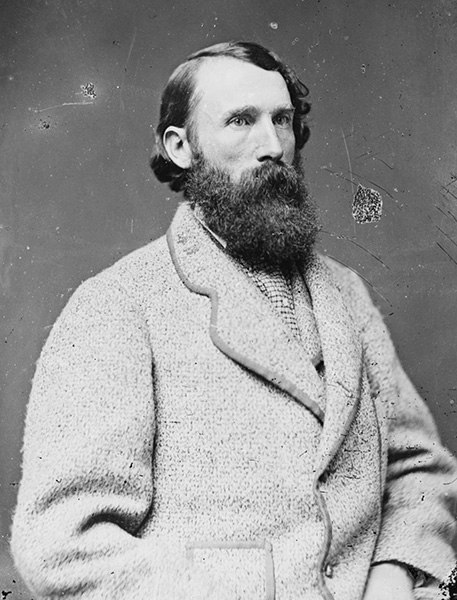
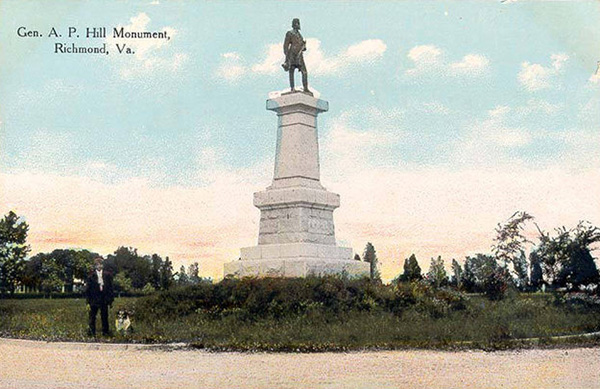
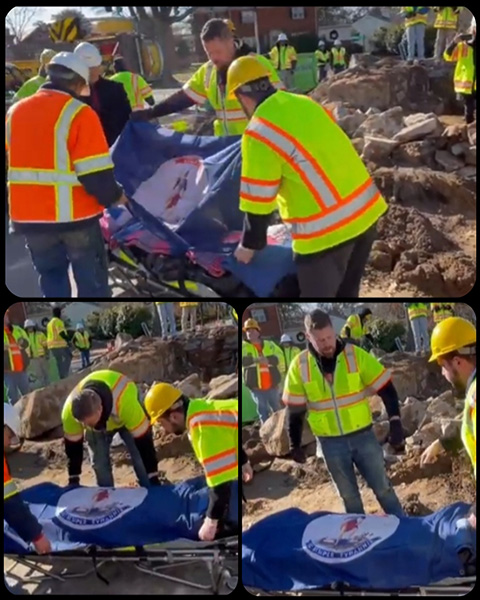
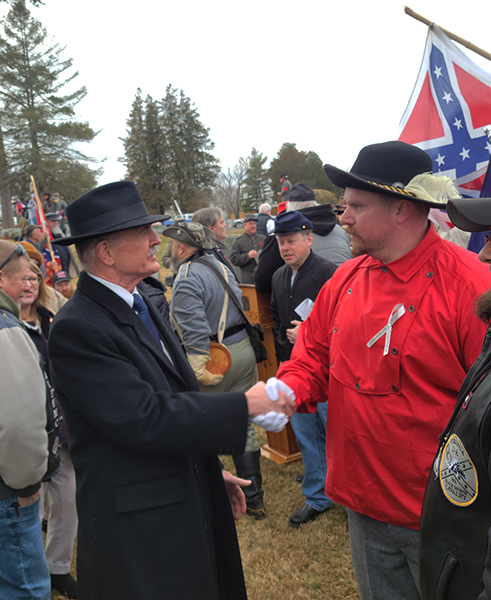
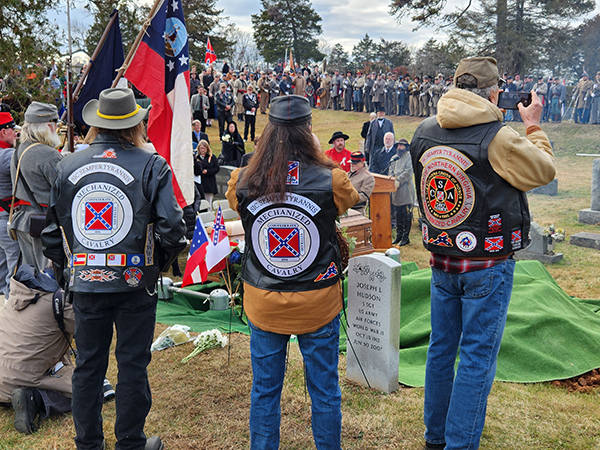


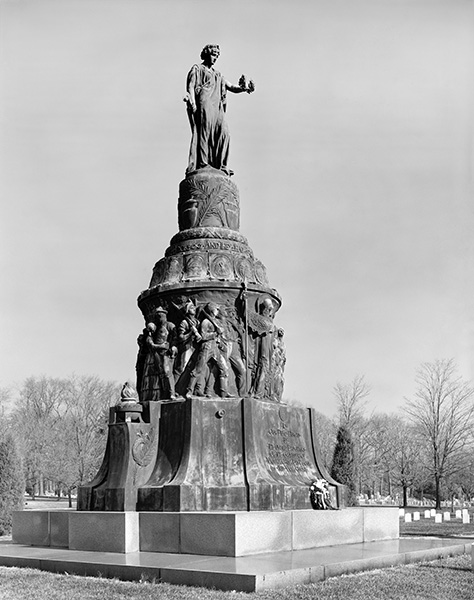






Good work to you!
FWIW, I support removing Confederate statues, but I think that graves are different and should not be disturbed.
The “poet laureate of the Confederacy”, Henry Timrod, wrote “Ode to the Confederate Dead” for the June 1866 memorial ceremony in Charleston’s Magnolia Cemetery. There, women strewed spring blossoms on the graves of the war’s casualties, in the observance that would inspire Memorial Day in the north. For generations, every southern schoolchild would be called on to memorize this classic poem. In it Timrod writes
[Their shades] will smile
More proudly on these wreaths to-day
Than when some canon-moulded pile
Shall overlook this bay.
The important distinction is that the ceremony (and the future monuments) honor not the failed confederacy but the courage of the men who fought for it. That is a big difference, and it sets this poem apart from the more militant orations declaimed that day. In the flowery verbiage so typical of overblown nineteenth century sentimentality, Timrod’s poem ends with the lines
There is no holier spot of ground
Than where defeated valor lies
By mourning beauty crowned.
One day perhaps the wound will heal, after being kept open after all these years, and the overly sensitive and misinformed souls of our time may mature some, so all may stop and consider what it all means, for them as well as for those who came before us, who were no less human, no less noble and no less deceitful, than we are now.
Henry Timrod, incidentally, was a mulatto. One of his ancestors was the slave “Doc Caesar” whose folk remedies were so effective that the South Carolina legislature bought his freedom in 1749 and settled the generous pension of £100 annually on him, in exchange for their formulas. His white southern contemporaries praised Henry for “overcoming his [racial] disability.” He’s buried next to dozens of rebel notables and a thousand CSA soldiers there in Magnolia Cemetery. This is yet another of those oddities of southern race relations, which are so confounding to us observers in the chillier climes.
Then you can kiss this southern boy’s asshole.
Mr. Hill, thank you for this recounting and of your service to your relative and a man who fought and died for us Southerners. That a negro presided over the court proceedings and other negroes were allowed to taunt you at such a solemn ocassion should remind everyone what times were like for our ancestors during Reconstruction. But, it seems like that’s not enough for these hate and revenge filled savages. In Charlottesville, they’ve got to get that final humiliation in of allowing a black museum to melt down the statue of Gen. Robert E. Lee and have it recast into ingots to be made into “art” done by negroes.
Below is an excerpt from REMINISCENCES OF A MISSISSIPPIAN IN PEACE AND WAR by Colonel Frank Montgomery of the 1st Mississippi Cavalry. He is describing his inspection of the field after he had been captured at the Battle of Selma on April 2, 1865. Of particular interest is the account of the murder of a wounded Confederate 19-year-old by triumphalist Federal soldiers.
Triumphalism is not a Southern trait, but it characterizes many other ethnic groups, especially those which seek to obliterate all memory of a distinctive region.
” In the course of the morning Colonel Pinson, Captain Taylor and myself requested permission to go over the field and see our dead and wounded. This was promptly granted, and a guard went with us. From the works to as far as some of our men had gone trying to escape, nearly half a mile, we found them lying, though some of our wounded had been picked up and were in hospital under the care of our surgeons.
As we went over the ground we found that the pockets of the dead had been turned, but little repaid the trouble of the vandals. One brave fellow, I knew him well, who had gotten farther than any other of those who were dead, had his pockets also turned out, and by his side lay a small Bible. He had been noted for his piety as well as for his courage, and his influence for good was marked. He belonged, I think, to Captain Lester’s company, but this matters little, he was a good man, a brave soldier, and went to his reward.
As we passed along we came to Henry Elliot, lying upon his back helpless with both legs and one arm broken. There he had lain the long night through, with no one to aid him or even give him a drink of water. Pale, but composed, the seal of death was on his face, but he was fully conscious, and he told me when he first was hit he stopped and tried to surrender, but the man who first got to him shot him again and again and left him for dead. The guard who was with us said it was because he had on a federal uniform, but this was not true, though he did have on a pair of sky blue pants. Even if it had been true it was a cruel, cowardly act, for to look at him was to see he was only a young boy. I recall that on the day before, in the midst of the fight, I noticed him and spoke to him and he had answered with a bright smile.
Poor boy, we could do nothing for him, but in a little time he was taken to the hospital, where before another day his brave and cheerful spirit went to its home, and he sleeps in the soil of the state he loved so well, and within a few miles of the place of his birth.”
Homoerotic, no? Lol rimming! 😉
Thanks for sharing this piece, Bert.
Great piece and very touching.We as a race and culture are under a massive siege.(((They)))and their brainless Black pets want us gone.They hate us because we are God’s image and not them.We love Christ and they despise Him.God bless you and your dear ancestor.My sincere belief is that all the things we cherish and our way of life will be recreated in Heaven.This Hell we endear is but a test.Your magnificent ancestor would be proud of your loyalty and your courage.I will read the site you mentioned and make a donation.Don’t mind the trolls,they are the usual IDF worker bees and always apparent by their hatred and vulgarity.Keep up your efforts and may God watch over you and keep you safe,you have my admiration.
I’ll offer it to you after a month of no baths and a week of intestinal issues.
Man, that is moving!
If it weren’t for brainless [b]lack pets, there would never have been a war. Where are the monuments to the American Colonization Society?